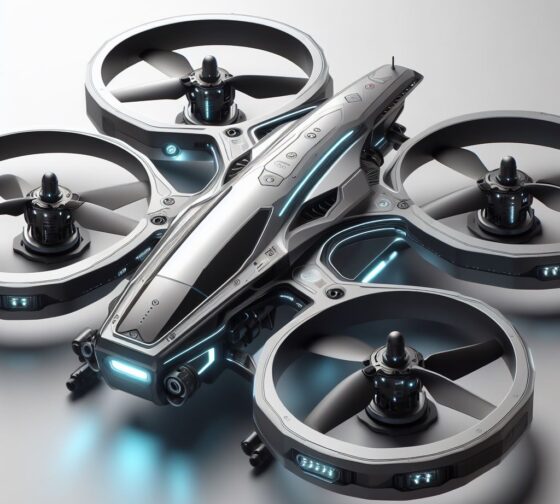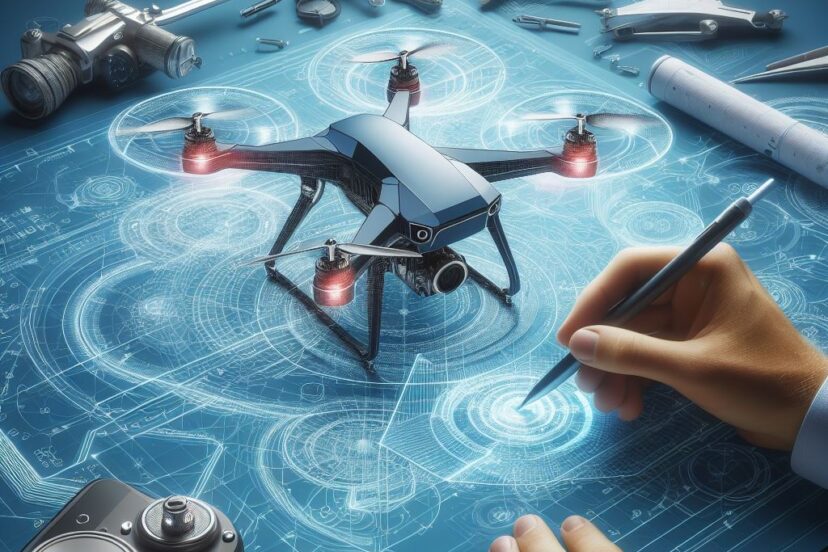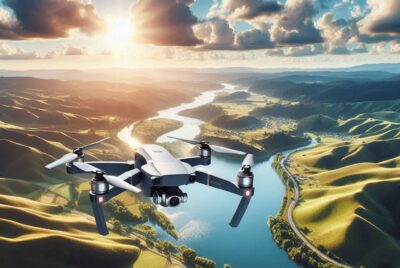Drone Design: Unveiling the Future of Aerial Innovation
*We may earn a commission for purchases made using our links. Please see our disclosure to learn more.
Drone Design: Crafting the Future of Aerial Innovation
Drone design is not merely about visual aesthetics; it is the cornerstone of functionality and performance. It encapsulates a meticulous approach to engineering, integrating principles of aerodynamics, materials science, and propulsion systems. Each aspect plays a pivotal role in determining the capabilities and efficiency of drones.
As a passionate drone enthusiast and advisor, the allure of drone design continually captivates me. It’s a fusion of engineering brilliance and creative innovation that defines the breathtaking capabilities of these aerial marvels. Let’s embark on a detailed exploration of the intricate facets that shape the design landscape of these remarkable flying machines.
Factors Influencing Drone Design
Aerodynamics and flight mechanics serve as the bedrock upon which drone design is built. The sleek, streamlined body, wings, and propellers are meticulously crafted to ensure optimal flight performance and efficiency. The choice of materials significantly impacts a drone’s strength, agility, and overall performance. Whether it’s lightweight carbon fiber for agility or robust plastics for durability, materials form the foundation of a drone’s design. Additionally, power systems and propulsion mechanisms—ranging from traditional rotors to innovative propulsion technologies—profoundly influence a drone’s endurance, speed, and maneuverability.
Key Components of a Drone
Every element of a drone, from its frame to motors, sensors, and batteries, contributes uniquely to its functionality. The frame’s design dictates structural integrity and durability, while powerful motors and well-designed propellers provide the necessary lift and precise control. Advanced sensors and navigation systems are integral, enabling accurate maneuverability, obstacle detection, and navigation. Meanwhile, the selection of batteries and sophisticated power management systems significantly impacts a drone’s flight duration and overall performance.
Considerations for Optimal Performance
Optimizing a drone’s performance involves a delicate balance of factors. Designers meticulously weigh and balance the drone’s weight against its payload capacity. Achieving stability during flight is a critical consideration, and this stability is influenced by various design choices, which are further impacted by weather conditions. Striking the perfect equilibrium in these aspects is crucial to ensuring an efficient and stable flight experience.
Design for Specific Applications

The world of drone design is diverse and adaptable, catering to specific applications. For drones utilized in photography and videography, the emphasis is placed on stability, camera stabilization, and precise maneuverability to capture stunning aerial imagery. Agricultural drones are engineered to accommodate payload capacity for tasks like crop spraying or monitoring. In contrast, delivery and logistics drones demand robust and secure designs capable of transporting packages efficiently.
Innovations in Drone Design
Recent years have witnessed groundbreaking innovations in drone design. The emergence of foldable and portable drone designs has revolutionized the industry, offering unparalleled convenience without compromising performance. Integration of artificial intelligence (AI) and autonomous capabilities has opened new frontiers, enhancing operational efficiency and enabling drones to perform complex tasks autonomously, thereby expanding their potential applications.
Challenges in Drone Design
Designing drones comes with its set of challenges, particularly in navigating regulatory constraints while prioritizing safety and security. Compliance with regulations while innovating poses a delicate balance for designers. Ensuring that drones meet specific regulatory standards without stifling technological advancements is an ongoing challenge within the industry.
Trends and Future of Drone Design

The future holds promising advancements in the realm of drone design. Industry forecasts predict the emergence of more compact, efficient, and autonomous drones. Breakthroughs in battery technology, coupled with advancements in aerodynamics and material science, will redefine the boundaries of aerial innovation. The potential for drones to reshape various industries and significantly impact our daily lives is on the horizon.
Impact of Design on Flight Maneuverability
Flight maneuverability is a crucial aspect deeply influenced by the intricacies of drone design. The design elements, such as the arrangement of motors and propellers, play a pivotal role in achieving precise control and agility in flight. Variations in motor configurations, like quadcopters versus hexacopters, significantly impact a drone’s maneuverability. Engineers meticulously optimize the placement and alignment of these components to ensure the drone’s responsiveness to pilot commands and its ability to navigate through diverse terrains with ease.
Furthermore, advancements in software algorithms augment these physical design aspects, enhancing the drone’s responsiveness and maneuvering capabilities, paving the way for more dynamic and agile flight experiences.
Human-Centric Design Enhancements
Beyond technical specifications, the focus on human-centric design enhancements is revolutionizing the drone industry. Manufacturers are incorporating user-friendly interfaces and intuitive controls, making drones more accessible to a broader audience. Ergonomic improvements in remote controllers, with simplified buttons and interfaces, ensure a seamless piloting experience even for beginners.
Moreover, advancements in safety features such as collision avoidance systems and automatic return-to-home functionalities prioritize user safety. This emphasis on user-centric design not only fosters ease of operation but also expands the demographic of drone enthusiasts, empowering more individuals to explore the boundless skies with confidence and ease.
Conclusion
In essence, the realm of drone design signifies an ever-evolving journey marked by relentless innovation and adaptation. As technological frontiers continue to expand, so does the potential for drones to reshape industries and redefine daily experiences. These flying marvels transcend being mere gadgets; they represent a transformative force poised to revolutionize diverse sectors, from entertainment and agriculture to logistics and beyond.
As we envision the future, the trajectory of drone design promises more than just advancements in engineering; it offers a gateway to a world where connectivity, efficiency, and creativity converge, propelling humanity into a new era of aerial exploration and innovation. The evolution of drone design, coupled with a commitment to safety, accessibility, and functionality, paves the way for a skyward future where the horizon is limitless and possibilities soar high.
FAQs on Drone Design
- How do different materials affect drone design?
- The choice of materials significantly impacts a drone’s weight, durability, and agility. Lightweight materials like carbon fiber enhance agility, while durable plastics ensure strength.
- Why are foldable drones becoming popular?
- Foldable designs offer unmatched portability and convenience, making them easier to transport without compromising performance.
- What role does battery technology play in drone design?
- Advanced battery technology directly influences flight duration and overall performance. Improved batteries contribute to longer flight times and enhanced capabilities.
- Are there specific regulations for drone design?
- Regulatory bodies impose guidelines concerning drone weight, flight capabilities, and safety features to ensure compliance and public safety.
- How does weather impact drone design choices?
- Weather conditions significantly affect flight stability and efficiency. Designers consider weather-resistant materials and systems to mitigate adverse weather effects on drones, ensuring consistent performance.




